Animal cruelty in the circus industry isn’t news to anyone, but it’s still happening under our noses. In response to growing concerns over the treatment of circus animals, Circus Roncalli from Germany is shaking things up with holograms of our favourite majestic animals.
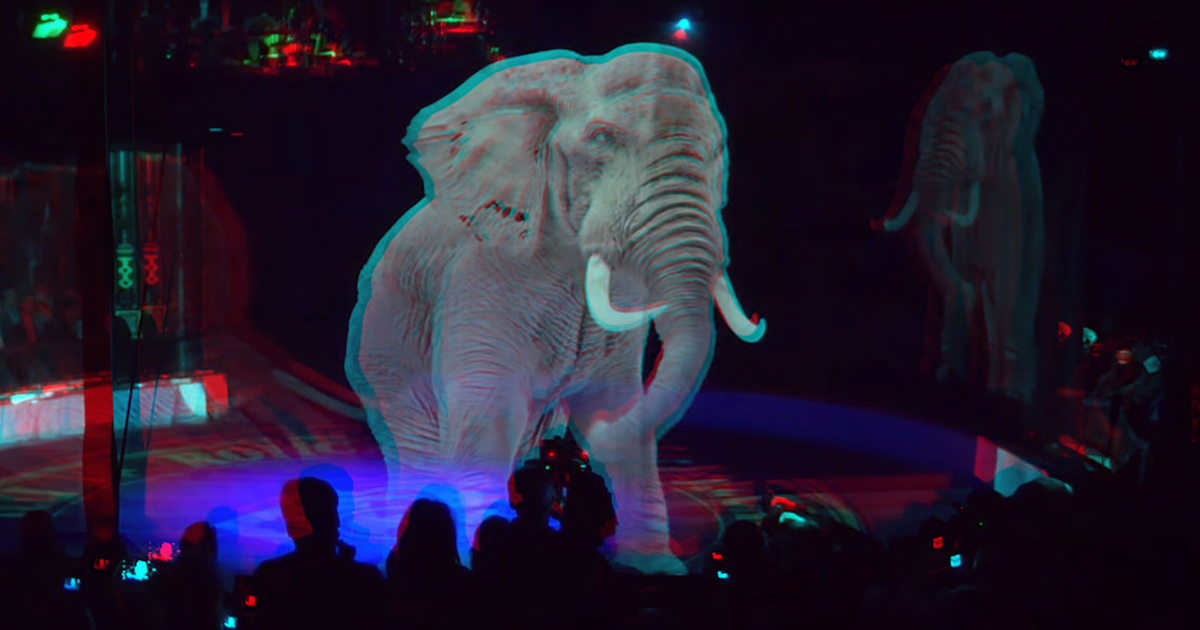
This 40-year-old company has been battling on the side of animals for years and has been gradually reducing the role they play in circuses. Circus animals are so often the target of abuse, trained in terrible conditions and have pain inflicted on them so they perform wild tricks for the entertainment of others.
Constantly on the road, these animals suffer from their lifestyle too. They are crammed into tiny spaces and travel long distances when they are on tour. Moreover, they have to continuously adapt to new venues, new people and hoards of crowds wherever they go.
Jon Harman, chief of staff for Chris Seelbach, the Cincinnati Councilman, revealed to the Cincinnati Enquirer that “In order to stay profitable, circuses must tour so intensely. The moment the show is over animals are returned to their cages, which are so small, and put on a train and are traveling so long that they go out and do the show and go right back into the cage.”
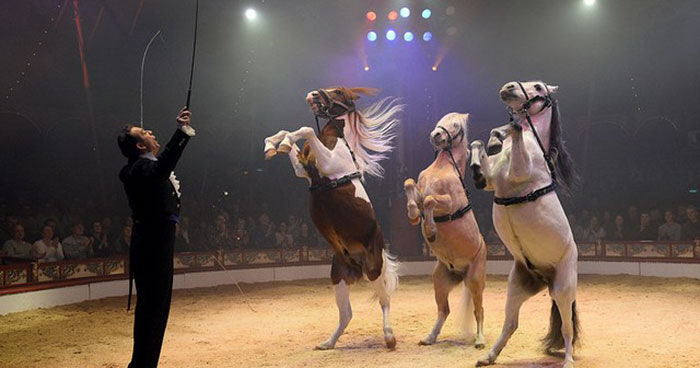
Cincinnati took a stand against these appalling conditions and joined New Jersey, Hawaii and California in banning exotic animals from performing. Rachel Mathews from PETA said, “Banning wild animals in circuses is right on trend with what’s going on around the country.”
But how do you put on a circus without any animals? Well, replace the tusks, manes and hoop-jumping with twinkling light and spellbinding projections and you have yourself a cruelty-free, aesthetically stunning performance.

It was an ambitious project. Using projectors, the company wanted to make 3D holograms that filled an area measuring 32 meters wide and 5 meters deep. Not only that, they wanted it to be a 360 experience, surrounding the audience with a visual feast.
Roncalli’s agency collaborated with Optoma to find the right technology. They ended up installing 11 ZU850 laser projectors. For those who know zilch about technology, they’re basically the best in the business. Birger Wunderlich was full of praise for this incredible kit, saying, “We have been using Optoma projectors for 6 years and have consistently had a very positive experience in price, performance, and reliability. We needed a high contrast projector with great colors for the 3D effect and the ZU850’s 2,000,000:1 contrast is perfect for this project.”
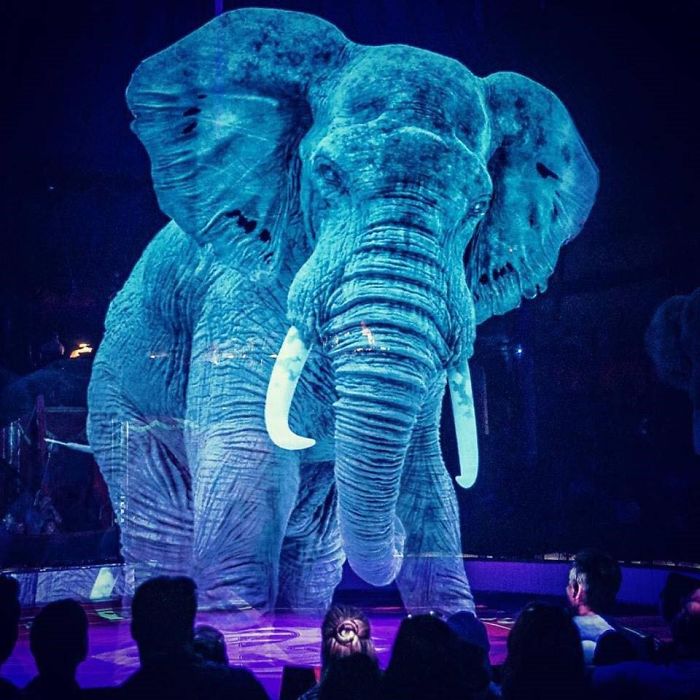
The first-of-its-kind show was ready for the world to see, and it was worth the wait. Enormous elephants stomped silently across the stage, glittering horses galloped in unison and gigantic goldfish were swimming in the air before transforming into a performing elephant in seconds. Now you could watch the huge mammal balance on its trunk without feeling wondering what torture it had been subjected to beforehand.
Needless to say, the audience were well and truly mesmerized by this dazzling show.
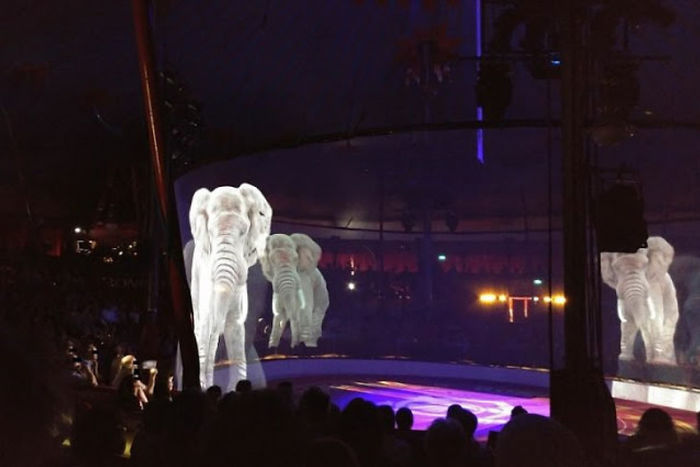
One spectator, Janine Kunze, was thoroughly impressed and told Big Think, “I thought the hologram at the beginning was really great. You actually remember the circus, especially Roncalli, with horses and dogs, they always used to be part of it, and I think they really included it well. Also, in the beginning when they told the story in a new kind of way.”
Others took to social media to share their experience. One user could see some serious potential: “They could do holograms of stuff like unicorns. IMAGINE!” Unicorns shows could be a thing people! Another user praised Roncalli’s care for animal welfare, saying, “Well this is incredible. @CircusRoncalli thank you so much for your compassion and ingenuity.”
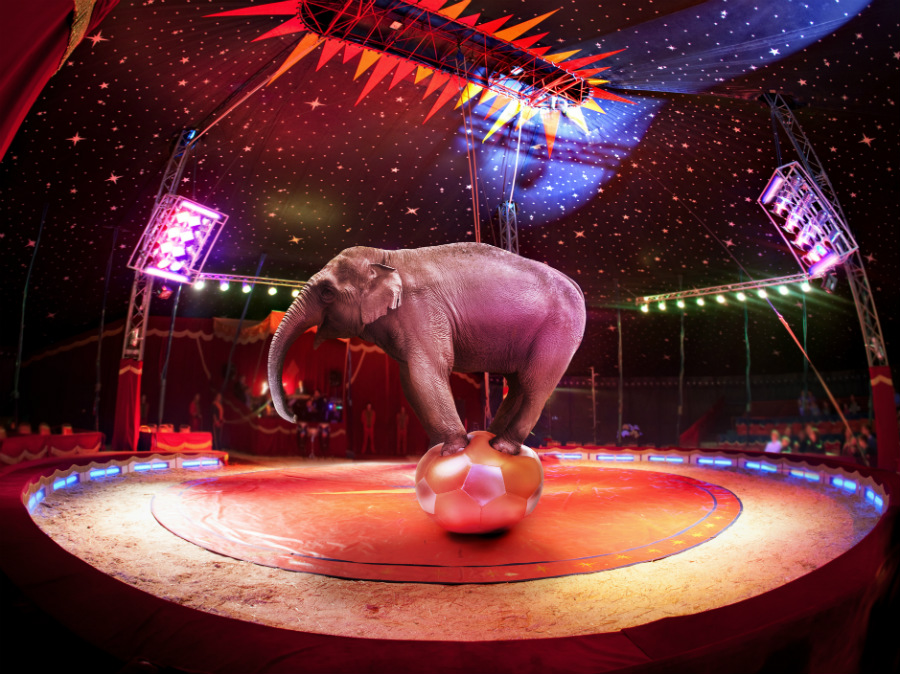
And it’s not just Circus Roncalli who is fighting to end animal suffering in the entertainment world. A legislation in the UK could ban the use of wild animals in traveling circuses by 2020. What’s more, the hologram show could be more visually appealing than the traditional circus. “Unfortunately, the ‘old’ circus has gotten a bit dusty, but this is how the circus can remain alive,” Max Schautzer, German TV anchor told Optoma.
Today the show is reaping the rewards. Costing an eye-watering $500,000 to complete, the show has been seen by over 600,000 people and has also employed clowns and performers to interact with the holograms throughout the show. Now that’s what we call entertainment!
Photo credits: Bored Panda, Big Think, Futurism, Zestradar.

